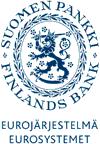 Scientific Monographs, Bank of Finland
Scientific Monographs, Bank of Finland
No E:43/2012:
Essays on small open economy macroeconomics
Hanna Freystätter ()
Abstract: This thesis consists of an introductory chapter and three
essays, all of which aim to study the functioning of a small open economy.
The thesis starts with an investigation of export and import price
determination and moves to a small open economy DSGE model framework in
order to study the role of financial factors in economic fluctuations. In
all three essays, theoretical small open economy models are used for
quantitative analysis of the small open economy of Finland.
The first
essay develops a model for aggregate trade price inflation that takes into
account two price setting conventions: local currency pricing (LCP) and
producer currency pricing (PCP). In our empirical work, we confront our
model with Finnish data and estimate the relative shares of LCP and PCP
firms in the economy. In the estimation period 1980–1998, the share of
local currency pricing was 40 percent in the export sector and 60 percent
in the import sector, implying a limited pass-through from exchange rate to
destination-country prices in both sectors.
The second essay builds a
small open economy DSGE model with the BGG financial accelerator and
financial market shocks. In our empirical work covering the period
1995–2008, we provide evidence of an operative financial accelerator in
Finland. The financial accelerator acts as an amplifying mechanism for many
disturbances hitting the Finnish economy. Our main result is that financial
market disturbances have contributed significantly to Finnish cyclical
fluctuations between 1995 and 2008. Even allowing for several shocks
stemming from both domestic sources and the international economy, domestic
financial market shocks emerge as key drivers of recent business cycle
fluctuations in Finland.
The third essay studies the boom-bust period
in Finland in the late 1980s and early 1990s, focusing on the role of
financial factors and investment behaviour. We construct a small open
economy DSGE model with the BGG financial accelerator and an unconventional
shock structure that captures the key events of the episode. In this model
framework, we study the role of financial market deregulation in the boom,
the negative impact of the collapse of Soviet-Finnish trade in 1991, and
the effect of the collapse of the fixed exchange rate regime in 1992. We
argue that the financial accelerator mechanism is a key amplifying
mechanism that helps the model to match, in particular, the large and
persistent swings of investment first above and later below its trend. This
essay demonstrates that the shocks Finland encountered combined with
financial frictions are able to produce a boom and a severe depression,
matching key salient features of the actual boom-bust cycle experienced in
Finland in the late 1980s and early 1990s.
Keywords: small open economy; DSGE models; economic fluctuations; boom-bust cycles; foreign trade price determination; BGG financial accelerator; financial market shocks; (follow links to similar papers)
JEL-Codes: E32; E44; F41; (follow links to similar papers)
177 pages, March 12, 2012
Before downloading any of the electronic versions below
you should read our statement on
copyright.
Download GhostScript
for viewing Postscript files and the
Acrobat Reader for viewing and printing pdf files.
Full text versions of the paper:
E_43.pdf 
Download Statistics
Questions (including download problems) about the papers in this series should be directed to Päivi Määttä () or Minna Nyman ()
Report other problems with accessing this service to Sune Karlsson ()
or Helena Lundin ().
Programing by
Design by Joachim Ekebom
 Scientific Monographs, Bank of Finland
Scientific Monographs, Bank of Finland
 Scientific Monographs, Bank of Finland
Scientific Monographs, Bank of Finland